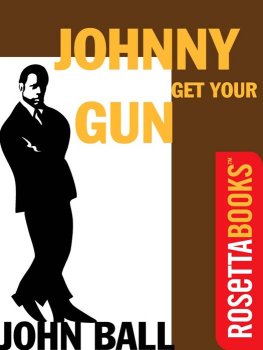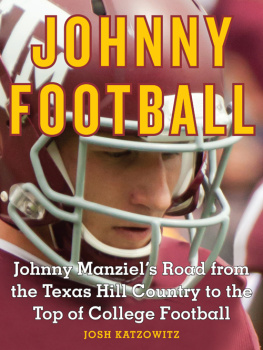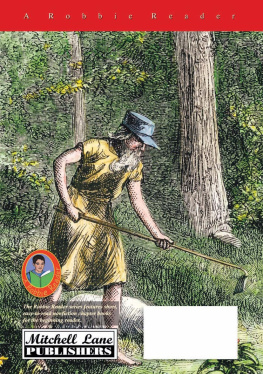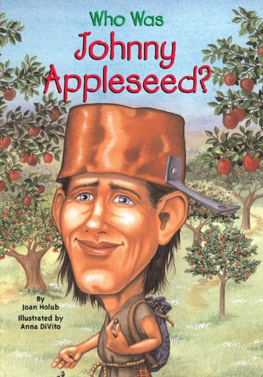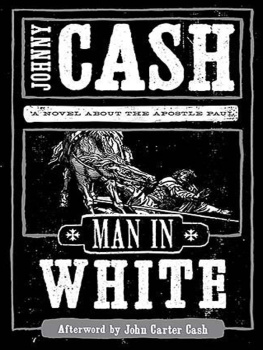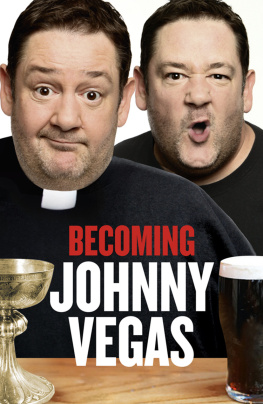BIBLIOGRAPHY
Haley, W. D. Johnny Appleseed, A Pioneer Hero. Harpers New Monthly Magazine , 43 (November 1871): 830836
Hodges, Margaret. The True Tale of Johnny Appleseed . New York, Holiday House: 1997.
Kellogg, Steven. Johnny Appleseed . New York, William Morrow and Company, Inc.: 1988.
Lawlor, Laurie. The Real Johnny Appleseed . Morton Grove, IL, Albert Whitman & Co.: 1995.
Moses, Will. Johnny Appleseed: The Story of A Legend . New York, Penguin Putnam Books for Young Readers: 2001.
Price, Robert. Johnny Appleseed: Man and Myth . Urbana, OH, Urbana University Press: 2001. (originally published in 1954)
Warrick, Karen Clemens. John Chapman: The Legendary Johnny Appleseed . Berkeley, NJ, Enslow Publishers, Inc.: 2001.
To learn more about Johnny Appleseed or about apples, visit these sites:
The Johnny Appleseed Society and
Museum Bailey Hall
Urbana University
579 College Way
Urbana, OH 43078
www.urbana.edu/appleseed.htm
The Johnny Appleseed Heritage Center and
Outdoor Historical Drama
www.jahci.org
The U.S. Apple Association
www.usapple.org
Ohio Apples
www.ohioapples.org
New York Apple Association
www.nyapplecountry.com
Washington State Apple Commission
www.bestapples.com

TIMELINE OF JOHNNY APPLESEEDS LIFE
| 1774 | John Chapman, later known as Johnny Appleseed, is born September 26, in Leominster, Massachusetts |
| 1776 | Johnnys mother and baby brother die |
| 1780 | Johnnys father remarries and moves the family to Longmeadow, Massachusetts |
| 1797 | Johnny moves west |
| 1798 | Johnny plants his first apple orchard in Warren, Pennsylvania |
| 1801 | Johnny plants his first apple orchard in Ohio |
| 1805 | Johnnys father and the rest of his family settle near Marietta, Ohio |
| 1807 | Johnnys father dies |
| 1809 | Johnny makes his first land purchase, in Mount Vernon, Ohio |
| 1813 | Johnny warns Ohio settlers of a suspected attack by Native Americans |
| 1816 | Johnny makes an Independence Day speech in Huron County, Ohio |
| 1817 | Johnnys missionary work is mentioned in a Swedenborg Church report in England |
| 1828 | Johnny describes himself as a gatherer and planter of apple seeds in a land deed |
| 1830 | Johnny plants his first orchard in Indiana |
| 1845 | Johnny dies on March 18 in Fort Wayne, Indiana, at the age of seventy |
| 1871 | An article about Johnnys life appears in Harpers New Monthly Magazine, making him famous around the world |
TIMELINE OF THE WORLD
| The Declaration of Independence is signed | 1776 |
| England signs the Treaty of Paris, ending the Revolutionary War | 1783 |
| The United States Constitution is approved | 1787 |
| The Northwest Territory is created and opened to settlement | 1787 |
| The Ohio Company establishes Marietta, Ohio | 1788 |
| George Washington is elected the first United States president | 1789 |
| Edward Jenner develops a vaccine to prevent smallpox | 1796 |
| French soldiers in Egypt discover the Rosetta stone, a key for translating hieroglyphics | 1799 |
| Beethoven finishes his first symphony | 1800 |
| Ohio becomes a state, the first in the Northwest Territory | 1803 |
| President Thomas Jefferson makes the Louisiana Purchase | 1803 |
| Lewis and Clark head westward on their exploration trip across America | 1804 |
| The War of 1812 begins between the United States and England | 1812 |
| French emperor Napolon Bonaparte is defeated | 1815 |
| Author Mary Shelley writes the book Frankenstein | 1818 |
| The United States adopts a flag with thirteen stripes and one star per state | 1818 |
| Naturalist Charles Darwin reaches the Galpagos Islands on a ship called the HMS Beagle | 1835 |
| Davy Crockett and others die at the Alamo in San Antonio, Texas | 1836 |
| Charles Dickenss book A Christmas Carol is published | 1843 |
Chapter 1
Young Johnny
It was September 26, 1774, in Leominster, Massachusetts. Colonists were just beginning to pick newly ripened apples from their trees. Nathaniel and Elizabeth Chapman were celebrating. Their first son was born that day. They named him John, but someday he would be better known as Johnny Appleseed.

Johnny also had a sister named Elizabeth. She was four years old. The family was poor and lived in a small house they rented from relatives. Though Johnnys father did farming and carpentry work, he wasnt very successful.

THE BOSTON TEA PARTY
TODAY, AMERICANS DRINK MORE COFFEE THAN TEA. BUT IN JOHNNY APPLESEEDS TIME, IT WAS THE OTHER WAY AROUND. TEA WAS MORE POPULAR. SO THE COLONISTS GOT REALLY MAD WHEN THE ENGLISH GOVERNMENT PUT A TAX ON IT.
BEGINNING IN 1765, ENGLAND SAID COLONISTS HAD TO PAY TAXES ON IMPORTED GLASS, LEAD, PAINT, PAPER, AND TEA. COLONISTS DIDNT WANT TO BE TAXED IF THEY WERENT ALLOWED ANY SAY IN MAKING LAWS. THEY DID EVERYTHING THEY COULD TO AVOID PAYING THE TAXES. ON DECEMBER 16, 1773, A GROUP OF COLONISTS DECIDED TO PROTEST THE TEA TAX IN A BIG WAY. DISGUISED AS MEMBERS OF THE MOHAWK TRIBE, THEY SNEAKED ONTO SHIPS DOCKED IN BOSTON HARBOR. THE SHIPS WERE LOADED WITH 342 BOXES OF TEA. MANY COLONISTS LIKED TEA SO MUCH THAT THEY HAD A HARD TIME DOING WITHOUT IT. TO STOP ANYONE FROM BUYING THE TEA, THESE MEN TOSSED IT OVERBOARD.

THIS PROTEST BECAME KNOWN AS THE BOSTON TEA PARTY. IT HAPPENED JUST FIFTY MILES FROM LEOMINSTER, WHERE JOHNNY WAS BORN NINE MONTHS LATER.
Shortly before Johnny was born, his father had taken on yet a third job. At that time, many colonists wanted to go to war against England. They hoped to break away and form a new country. Like many of these patriots, Johnnys father became a minuteman. Minutemen promised to defend the thirteen colonies from English troops at a minutes notice.
When Johnny was less than a year old, his father was called to duty. He helped fight the English at the battle of Bunker Hill.

By the spring of 1776, his father was marching with George Washingtons army. That July, the Declaration of Independence was signed. The colonies were fighting for independence from England in the Revolutionary War.


